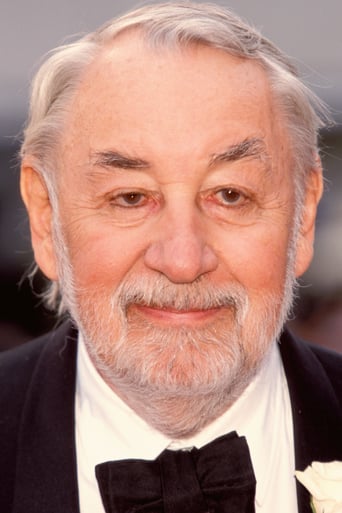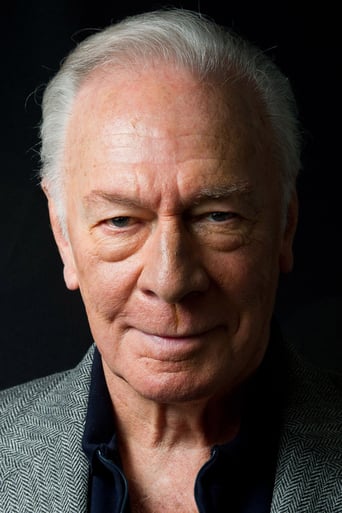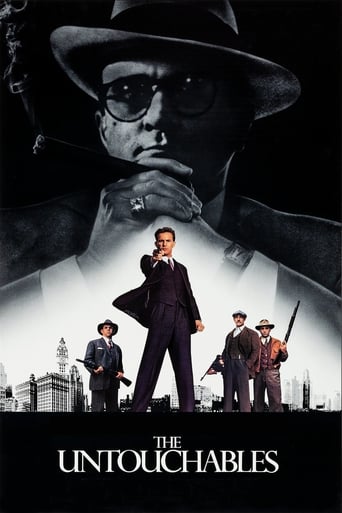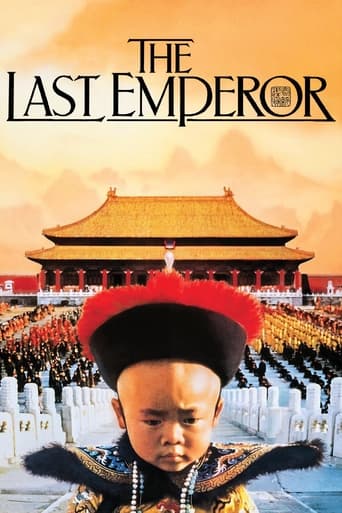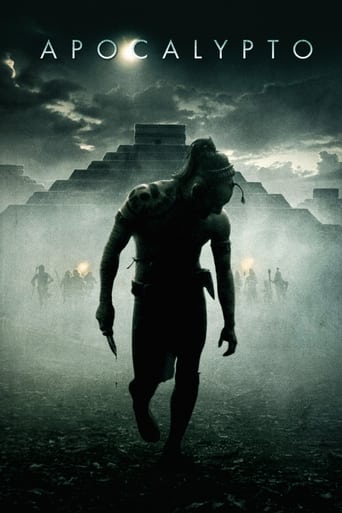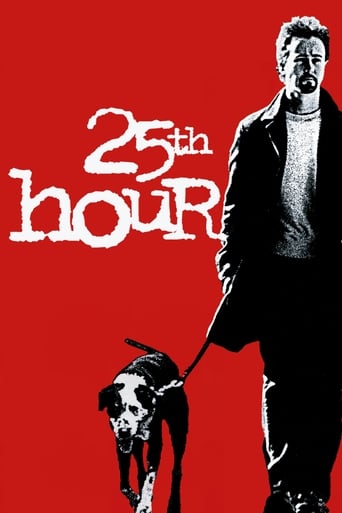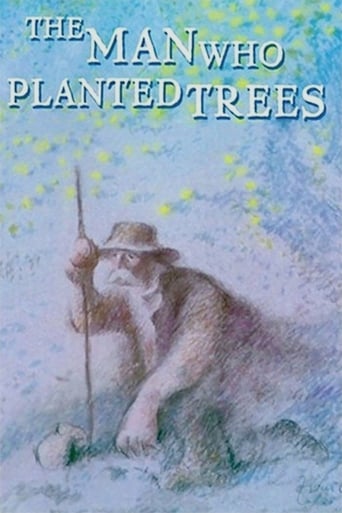

The Man Who Planted Trees (1987)
The story of one shepherd's single-handed quest to re-forest a desolate valley in the foothills of the French Alps throughout the first half of the 20th century.
Watch Trailer
Cast


Similar titles
Reviews
Simple story of the power of a life of hope, generosity, and perseverance.Animated, well-drawn.A man spends years planting trees, gradually transforming a wasteland into a forest; changes the area from one supporting a few ornery people into thriving towns.Seems like a true story.Set in the years between WWI and WWII in Provence, in southeastern France, at an altitude of about 1000 meters.Well done, worth a look.
The Man Who Planted Trees is a work of art, a masterpiece brought to life. What aspect is there to critique? The effects? The plot? The music? I personally find myself unable to detect a flaw in any of these.The story is narrated by, and follows a young man who hikes through a barren valley. Just when he can no longer bear the ripping wind and dryness, and has run out of water in his gourd, he comes across a lone farmer, a hermit, a wordless, mysterious man. Here he stays and gets to know the man, and learns of his "mission" that he has been working on for years: to plant 100 trees everyday for years. At that time, no noticeable progress can be seen, but years later, when the traveler returns, he finds a growing, beautiful forest, full of life, where before there was none. As the traveler leaves and returns over the next few years, he continues to find the growing forest, and soon he is not the only visitor, and this new forest has been deemed "natural", a "miracle". Amazing how the farmer, the father of this new forest, remains in silence the entire time, not expecting the credit he so rightfully deserves. It is here that I find the most wonderful part of the story: this character's relentless unselfishness, his lack of want for fame, or even company.This story is a beautifully animated rendition of man's greatest qualities, of our ability to not expect payment for our services, a beautiful example of the most extreme form of altruism. The Man Who Planted Trees is a flawless work of art, one whose message remains unparalleled.
Frédéric Back's 'The Man Who Planted Trees (1987)' is the one short film that has been fervently recommended to me above all others, and I'm surprised that it took me so very long to get around to it {fortunately, my stubbornness proved beneficial, since I was able to hold out for a high-quality copy}. My only previous experience with Back was his first Oscar-nominated effort 'All Nothing (1980)' in May 2007, and I enjoyed its artistry, even if the basis in Creationism kept me distanced from its central themes. This effort, arguably Back's most celebrated, tells the story of Elezeard Bouffier, an old shepherd who singlehandedly created a forest through decades of planting seeds. Though I initially assumed that Bouffier was a real-life figure, he was, in fact, a fictional creation of author Jean Giono, who apparently perpetuated the misconception. Either way, this shepherd's story is powerful and inspirational, Back's animation giving life to Giono's uplifting tale.When I recall Frédéric Back's work, the first contemporary animator who comes to mind is Aleksandr Petrov, whose paint-on-glass animation allows similar dream-like visuals that morph from one image to another like a shifting desert landscape. 'The Man Who Planted Trees' doesn't resemble a moving oil painting, as does Petrov's work, but instead bears a slightly more minimalistic pastel-sketching style. Even so, the attention-to-detail is simply staggering. For the film's opening half, the colour palette is largely sepia-toned, emphasising the sheer barrenness of the desert, with bare rocks and coarse weeds lashed by a dry, bitter wind. As Bouffier plants his trees, Back gradually introduces colour into his work, symbolising the physical and spiritual rebirth of the region. My single slight criticism with the film is that the narration should probably have been used more sparingly. As warm as I found Christopher Plummer's voice, I think that some scenes would have proved more powerful had the viewer been left to his own accord, to absorb for himself the breathtaking beauty of Back's animation.'The Man Who Planted Trees' serves, I think, as a fine counterpoint to Back's previous short film, 'All Nothing.' In the latter, a dissatisfied Mankind rapes and pillages the life that his Creator has placed upon the planet. In this film, Mankind gives back to nature; rather than destroying life, Bouffier creates it himself, even as two World Wars rage overhead. On at least two occasions, the narrator {Christopher Plummer in the English-language version, Philippe Noiret in the French} remarks that what Bouffier accomplished makes him something akin to God. Indeed, the government officials who arrive to observe his forest can think of no other explanation for the miraculous rebirth, declaring it an astonishing natural phenomenon. Nobody can believe that all this joy could have been created by the hand of a single man. I interpreted this as a touchingly humanist statement. After all, if an old shepherd like Elezeard Bouffier can give rise to such life, why, indeed, do we need a God at all?
THE MAN WHO PLANTED TREES was the Academy Award winning Best Animated Short for 1988. However, I did not see the original French language version (narrated by Philippe Noiret) but the English language one (narrated by Christopher Plummer). Plummer's voice was very sweet and melodious--perfect for this gentle little film.The film is a supposedly true story about an odd man who lives in the middle of nowhere--planting trees and living very contentedly with the land. To heighten the effect, the film is gorgeously hand rendered using what appear to perhaps be colored pencils--making a wonderfully colorful and artistic tapestry--something you could never achieve with traditional animation. Perfect for the film and truly an amazing piece of art--like something that should be in a museum exhibit.A lovely little tale about ecology and mankind. It's not exactly exciting--see it for its beauty and for its strong emotional impact. If by the time you've finished watching this film if you aren't touched, then you are probably dead!


